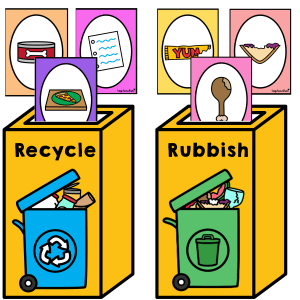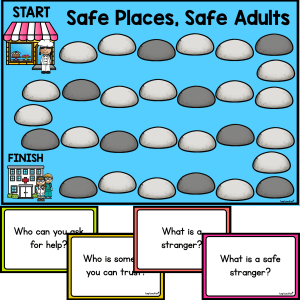Graph & Grab: Statistics Card Game

Description
Learning graphing conventions becomes an interactive and exciting adventure with the Graph & Grab: Statistics Card Game. This resource has been carefully designed to give students repeated, meaningful practice identifying and applying the key features of column graphs, line graphs, and pie charts – all through the fun of a fast-paced card game!
Students will draw from a shared pile of cards that represent common graphing conventions such as axis labels, graph titles, data points, segments, legends, and more. As they “grab” cards that match their assigned graph type, students will learn to distinguish the different features unique to column graphs, line graphs, and pie charts. With 63 cards available in both colour and low-colour versions, the game is visually engaging and classroom-friendly. A recording sheet is also included to consolidate learning and promote reflection after each game session.
Whether you're introducing these graphing conventions for the first time or reinforcing them through review, Graph & Grab offers a dynamic and social way to build statistical literacy. The cards cover a wide range of features and are sorted by graph type, allowing you to focus your instruction or mix them together for a greater challenge. Perfect for small group rotations, early finishers, or maths games time – this resource transforms graphing into a game your students will want to play again and again.
Key Learning Outcomes:
- ✅ Identify and describe key features of column graphs, line graphs, and pie charts
- ✅ Use correct terminology when discussing graphing conventions
- ✅ Apply knowledge of graph features through hands-on card play
- ✅ Collaborate and communicate effectively in small group settings
What’s Included:
- 63 graphing convention game cards (in colour and low-colour versions)
- Optional recording sheet for post-game reflection or assessment
- Graph convention reference sheet sorted by graph type
- Instructions for individual, partner, or small group play
Materials Needed:
- Printed and cut game cards (preferably on thick card or laminated for reuse)
- Recording sheets (optional)
- Graph convention guide (for teacher or student reference)
How to Use:
- Print and cut the cards for classroom use, sorting by colour-coded graph type if desired.
- Introduce or revise the conventions of column, line, and pie graphs using the reference sheet.
- Group students into pairs or small teams and give each group a stack of mixed cards.
- Assign a graph type to each player. Players take turns flipping a card and deciding if it belongs to their graph type.
- If the card matches their type, they “grab” it and explain its purpose; if not, it goes back in the pile.
- After collecting a set number of cards, students complete the recording sheet to reflect on what they’ve learned.
Ideas for Classroom Use:
- 💡 Use during maths rotations as a hands-on, cooperative learning activity
- 💡 Assign different graph types to different groups for focused revision
- 💡 Have students create their own additional cards after gameplay for an extension task
- 💡 Integrate into assessment week as an informal, low-pressure way to gauge understanding
Top Teacher Tips:
- 💛 Store the cards in labelled envelopes or ziplock bags for quick access and reuse
- 💛 Print on cardstock or laminate to increase durability during repeated play
- 💛 Encourage discussion by having students justify their grabs using correct vocabulary
- 💛 Use the included recording sheet for evidence of learning or as a checkpoint during your statistics unit
With its playful format and curriculum-aligned focus, Graph & Grab: Statistics Card Game turns the sometimes dry topic of graphing conventions into a high-energy classroom favourite – helping students build confidence, accuracy, and enthusiasm for statistics.
Additional information
| Number of Pages | 10 |
|---|---|
| File Format | |
| Australian Curriculum Code | AC9M3ST02, AC9S3I04, AC9S4I04 |
Australian Curriculum V9
F - 6
Lorem ipsum dolor sit amet, consectetur adipiscing elit.
Lorem ipsum dolor sit amet, consectetur adipiscing elit.
Lorem ipsum/ Lorem ipsum/ Lorem ipsum
Lorem ipsum dolor sit amet, consectetur adipiscing elit.
Lorem ipsum dolor sit amet, consectetur adipiscing elit.
Lorem ipsum/ Lorem ipsum/ Lorem ipsum
Lorem ipsum dolor sit amet, consectetur adipiscing elit.
Lorem ipsum dolor sit amet, consectetur adipiscing elit.
Lorem ipsum/ Lorem ipsum/ Lorem ipsum
Lorem ipsum dolor sit amet, consectetur adipiscing elit.
Lorem ipsum dolor sit amet, consectetur adipiscing elit.
Lorem ipsum/ Lorem ipsum/ Lorem ipsum
Lorem ipsum dolor sit amet, consectetur adipiscing elit.
Lorem ipsum dolor sit amet, consectetur adipiscing elit.
Lorem ipsum/ Lorem ipsum/ Lorem ipsum





